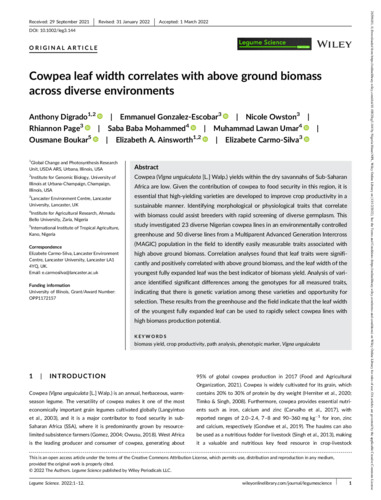Cowpea leaf width correlates with above ground biomass across diverse environments
Abstract
Cowpea (Vigna unguiculata [L.] Walp.) yields within the dry savannahs of Sub-Saharan Africa are low. Given the contribution of cowpea to food security in this region, it is essential that high-yielding varieties are developed to improve crop productivity in a sustainable manner. Identifying morphological or physiological traits that correlate with biomass could assist breeders with rapid screening of diverse germplasm. This study investigated 23 diverse Nigerian cowpea lines in an environmentally controlled greenhouse and 50 diverse lines from a Multiparent Advanced Generation Intercross (MAGIC) population in the field to identify easily measurable traits associated with high above ground biomass. Correlation analyses found that leaf traits were significantly and positively correlated with above ground biomass, and the leaf width of the youngest fully expanded leaf was the best indicator of biomass yield. Analysis of variance identified significant differences among the genotypes for all measured traits, indicating that there is genetic variation among these varieties and opportunity for selection. These results from the greenhouse and the field indicate that the leaf width of the youngest fully expanded leaf can be used to rapidly select cowpea lines with high biomass production potential.

